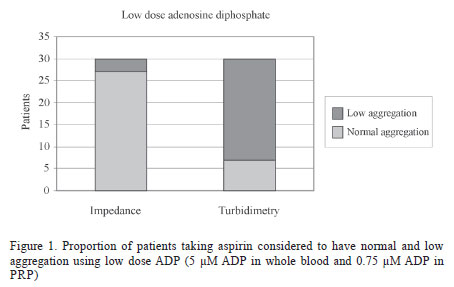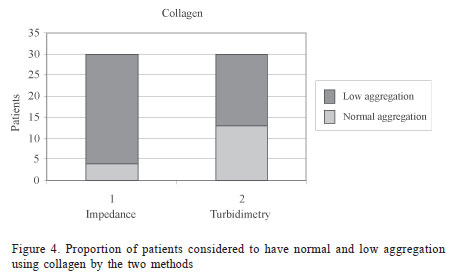INTRODUCTION: Hyperaggregation of platelets can cause the formation of thrombi and subsequent occlusion of blood vessels leading to ischemia. This phenomenon can be responsible for ischemic cardiovascular diseases such as angina pectoris and atherosclerosis as well as other forms of ischemia such as stroke. To decrease platelet function and reduce the formation of thrombi, acetylsalicylic acid has been used for antithrombotic treatment, with several studies showing its effectiveness. Therefore it is necessary to use a laboratory tool to monitor the effectiveness of treatment, which is achieved through laboratory testing of platelet aggregation. The aim of this study was to compare two different methods (impedance and turbidimetry) to test platelet aggregation in 30 adult patients of both genders taking acetylsalicylic acid. CONCLUSION: The results show that there is a good correlation between these two methods and so both these techniques can be used in the clinical routine.
Platelet aggregation; Aspirin; Nephelometry and turbidimetry; Electric impedance; Blood coagulation; Collagen; Heparin








